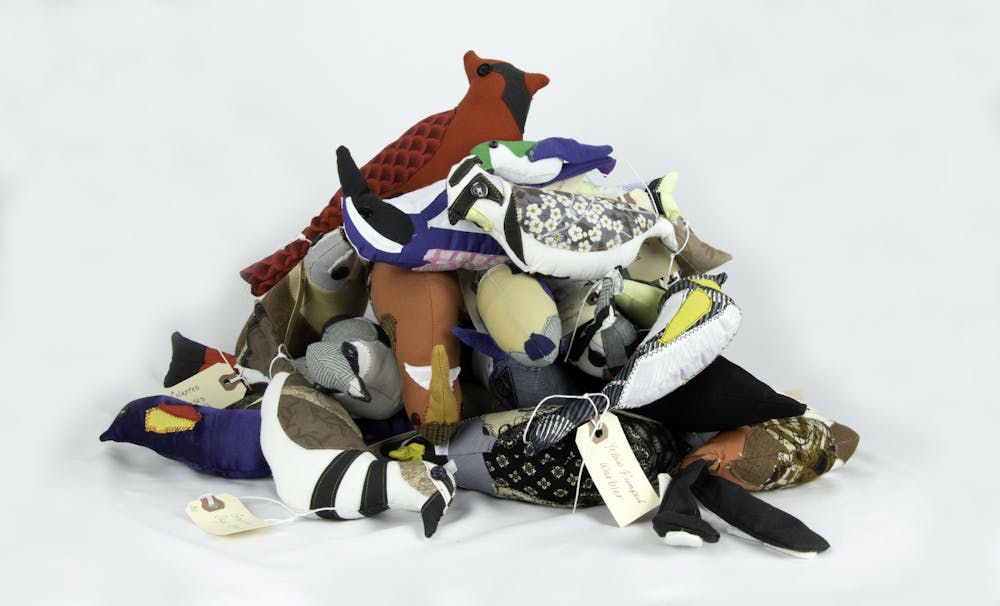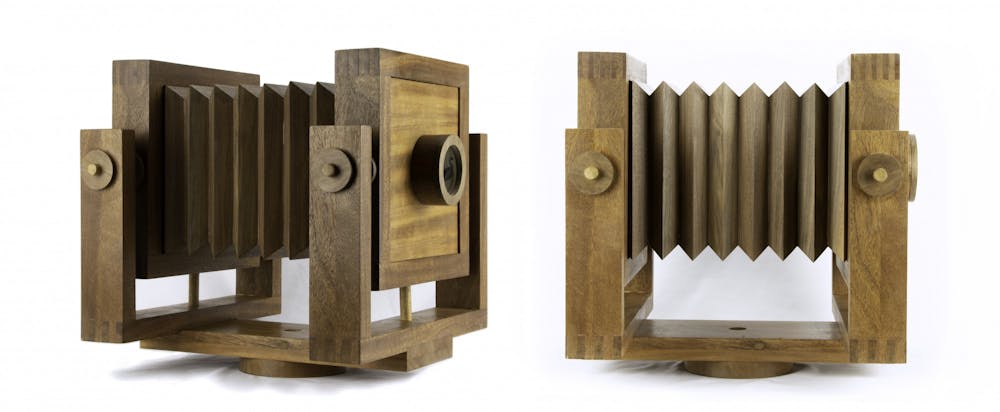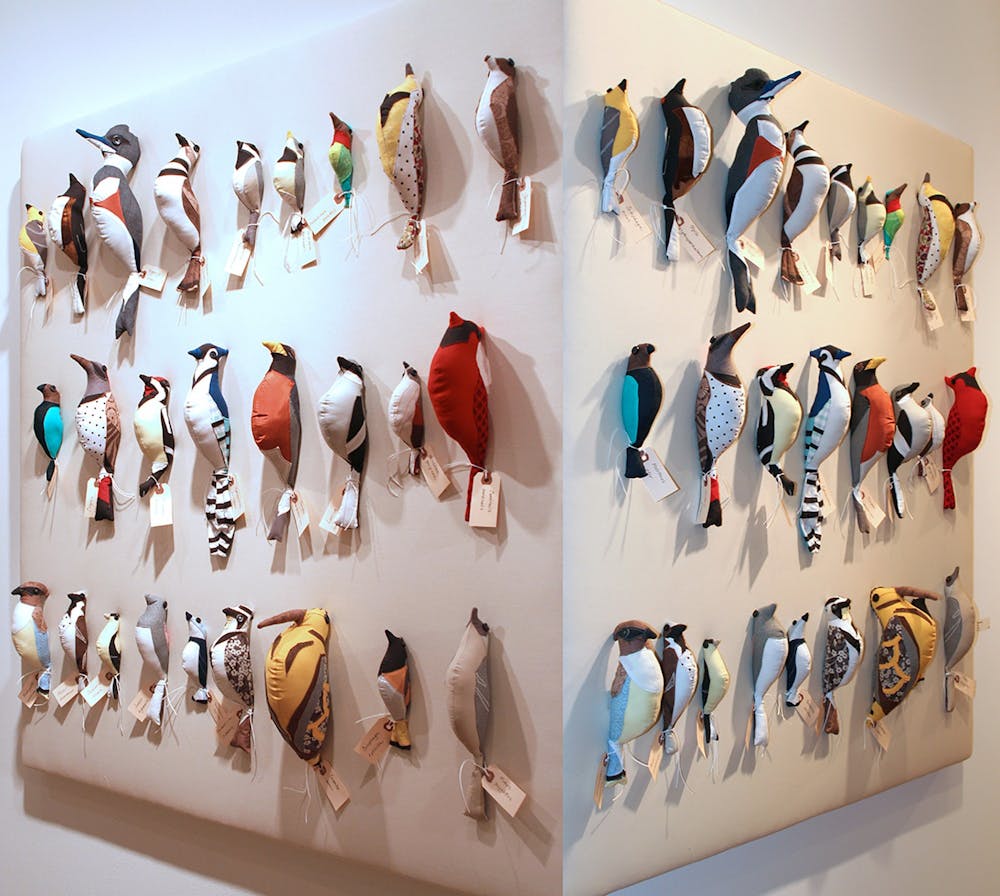The newest McMaster exhibit "Darwin's Finches" by Eloisa Guanlao opened on Oct. 19 and features perched stuffed birds and handcrafted wooden cameras.
Born in the Philippines, nomadic scholar and artist Eloisa Guanlao said she approaches art using three main themes: The "forced and voluntary migration of flora and fauna," "colonialism" and "technological dependence."
The theme of forced and voluntary migration of flora and fauna explores what Guanlao described as "our terrible track record as a species" for maintaining biodiversity, seen through Darwin's Finches.
“I was looking at more recent migrations because I am an immigrant," said Guanlao. "I’m very much interested in why people move around, why plants move around and why birds move around."
Colonialism is represented in Guanlao's work through her interest in Edward W. Said and his idea of Orientalism and the acquirement of knowledge by white Europeans to dominate their colonial holdings.
Technological Dependence then tackles Guanlao's own anxiety surrounding society becoming entirely reliant on technology to solve problems and issues in the world such as cloud seeding and the mass construction of communication towers.
Eloisa Guanlao's personal interests in the natural world, art, languages and literature have cultivated her desire to create art that is research-intensive and relevant to current issues.
Guanlao began working on Darwin’s Finches while living in Alabama. She said she would find the carcasses of dead birds and fossils when she took hikes with her partner. She captured these discoveries using ambrotype photography, a practice first introduced in the 1800s, that displays a black and white appearance.
Ambrotypes are underexposed glass negatives placed against a dark background, according to the Library of Congress website. Negatives are images that make the bright areas of the subject, dark and the dark parts, light. The dark background that is placed against the photo, then turns that negative photo, positive. Positives are photos that depict the lighting that most accurately matches the original scene.
Guanlao uses this photography method to highlight past ages in photography, exhibiting the progression camera technology has made over the centuries.
She then realized that instead of collecting the birds, she could create stuffed versions for her young children to play with since they would frequent her studio wanting to touch some of her fragile pieces.

“What if I make birds for my kids?" Guanlao said. "(My kids) grow so fast that they outgrow so many clothes. So I thought, 'I’ll just use their outgrown clothes.'"
Guanlao uses the clothes as material for the exterior of the birds.
Guanlao said she is currently striving to incorporate more stuffed birds into the exhibit and plans on making 25 birds for each of the 9 states she has lived in, totaling 225 birds. The birds represent Guanlao's personal migration through the United States.
She started this process by creating a replica of the Cerulean Warbler, a species facing extinction in the Alabama area due to loss of habitat and has now made up to 200 bird creations.
The birds act as commentary on the loss of habitat, since a portion of the species portrayed is extinct, according to Olga Yukhno, McMaster gallery manager.
Guanlao is also a skilled woodworker and has created replicas of 19th-century cameras to go along with the stuffed birds. Ambrotype photographs of the replica birds are then encased in the lens of the cameras.
In the exhibit, the cameras are raised by wooden tripods also created by Guanlao so that viewers can gaze into the cameras themselves.
The positioning of the cameras holds significance to Guanlao, she said, as they are situated in a way to spark self-reflection upon the viewer. Through looking into the cameras, the viewer is now inadvertently seeing the world through a different lens.

Maddie Mather, a second-year biology student who attended the exhibit, said it was interesting to see the progression of technology being displayed.
Through this art, viewers are invited to meditate on society’s reliance on technology and how its innovations have either harmed or helped the surrounding world.
As part of McMaster’s visiting artist and scholar series, Guanlao also hosted an extended artist talk, a photography workshop and several class visits at the university with the last event on Oct. 21.
“It is very important for us to have opportunities that involve the public so people from Columbia can come and meet the artists, get more engaged with what the school does, learn more about what we do, and just give back to the community in this really unique way of bringing artists from all over the country,” Yukhno said.
Darwin’s Finches comes to a close on Dec. 2. More information on the McMaster Gallery’s event schedule here.

